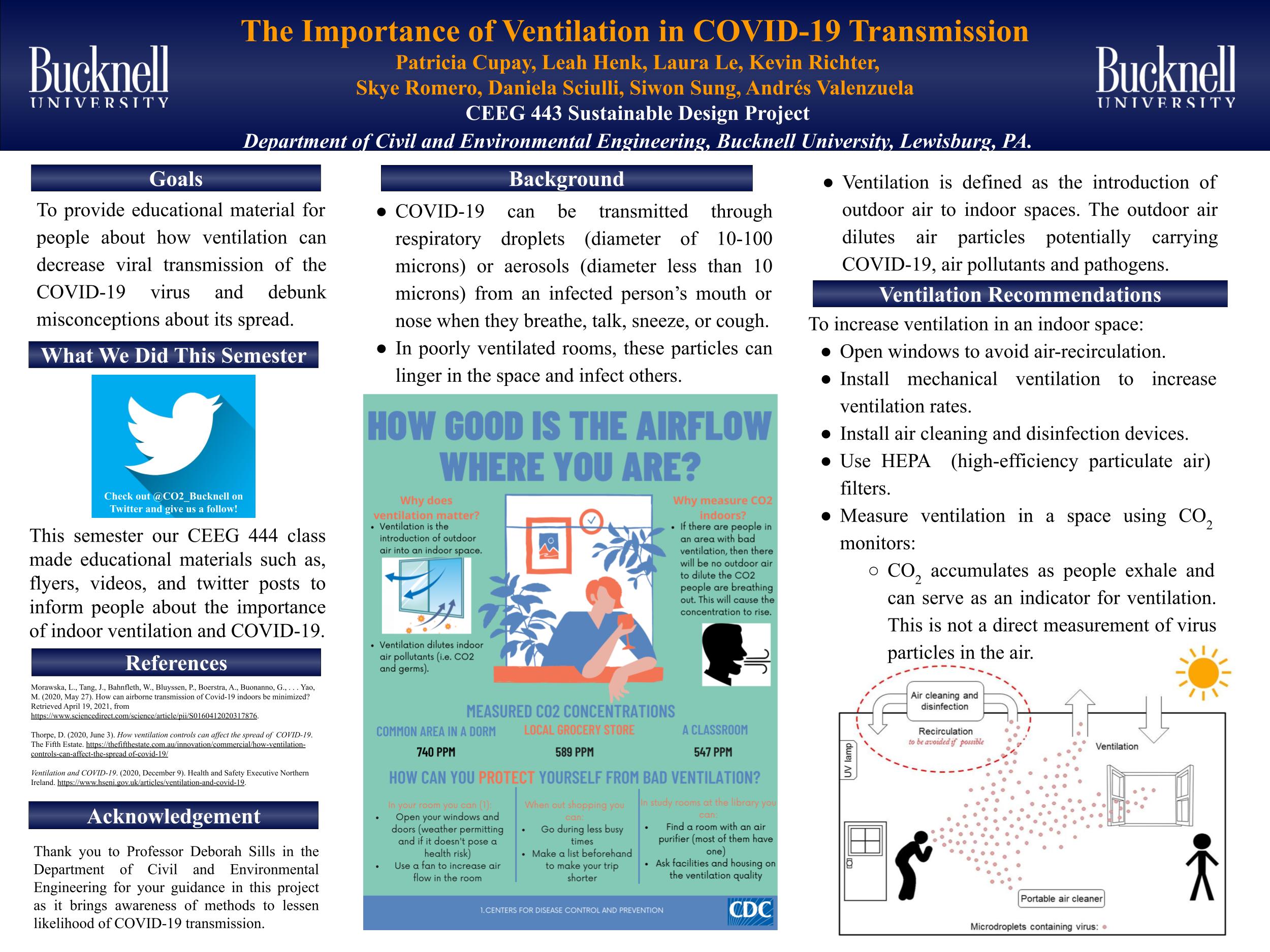Author:
Andres Valenzuela
Co-Authors:
Patricia Cupay, Leah Henk, Laura Le, Kevin Richter, Skye Romero, Daniela Sciulli, Siwon Sung, Andrés Valenzuela
Institution:
Bucknell University (CEEG 443)
Abstract
The COVID-19 virus has been a part of everyone’s lives for over a year but there are still many misconceptions about how the virus is transmitted. In this poster we will show educational materials we created that aim to clarify the main transmission method of the virus, which is through respiratory droplets and aerosols. Respiratory droplets (diameter of 10-100 microns) or aerosols (diameter less than 10 microns) come from an infected person’s mouth or nose when they breathe, talk, sneeze, or cough. In a poorly ventilated room, these particles can linger in the air and infect others. In addition to wearing masks properly, ventilation can reduce COVID-19 transmission. Ventilation brings in outdoor air to dilute air particles related to COVID-19, and also other air pollutants and pathogens. Measuring CO2 is one way to estimate how often air is being exchanged in a room, with higher CO2 levels could indicate a low level of ventilation. Students in CEEG 443 measured CO2 concentrations on and around campus. Our measurements show that ventilation can be improved by opening up windows or by using mechanical ventilation. As the pandemic continues, understanding the power of ventilation and its role in virus transmission is more important than ever.

